Tokina atx-m 33mm F1.4 X Handleiding
Bekijk gratis de handleiding van Tokina atx-m 33mm F1.4 X (2 pagina’s), behorend tot de categorie Lens. Deze gids werd als nuttig beoordeeld door 6 mensen en kreeg gemiddeld 4.7 sterren uit 3.5 reviews. Heb je een vraag over Tokina atx-m 33mm F1.4 X of wil je andere gebruikers van dit product iets vragen? Stel een vraag
Pagina 1/2

Cuidados al utilizar el flash incorporado
Cuando se realiza una toma con el flash incorporado en la cámara o con
un flash pequeño, la luz del flash puede ser parcialmente bloqueada y la
sombra del objetivo aparecer en la pantalla. En este caso, use un flash
externo.
How to attach and remove lens
Please follow the camera instruction manual for attaching and removing
the lens.
※Take care to not touch or hit electrical contacts on the mounting face
of the lens while attaching or removing.
Aperture Settings
Please set the aperture settings on the camera side in accordance with
the shooting mode.
[Aperture ring operation]
Operate the aperture ring to set the aperture value.
To set the aperture to auto, rotate the aperture ring to set the aperture
indicator to the position “A”.
To set the aperture to manual, rotate the aperture ring to position the
aperture indicator to the desired aperture value.
The aperture ring is designed to click on at the “A” position and the “F16”
position but the stepless design allows you to set the aperture to any
setting between F1.4 (fully open) and F16 (smallest).
Focusing
■Focusing using autofocus
Set your camera focus mode to “AF”.
Press and hold the shutter button half-way down to use autofocus.
■Focusing using manual focus
Set your camera focus mode to “MF”. Rotate the focus ring while confirm-
ing the image in the camera monitor and viewfinder to focus the camera.
[Switching to manual focus when in auto focus mode]
You can use various assist functions to focus the camera while in manual
focus mode.
Check your camera user manual for detailed operating instructions.
ENGLISH
Please use round screw-in filters. If there is grime or water drops on the
filter, it will cause lens flare and ghosting. Be sure to clean the filter
thoroughly before taking pictures.
※Please use only one filter at a time. If more than one is used at the same
time, it may cause vignetting.
Filter
Part names
※The marking (certication mark for conformance with the European export
inspection requirements) is shown on lenses containing electronic parts. The mark
also declares compliance with environmental performance standards for products
stipulated in the RoHS directive.
※ A display mark indicating inclusion in the China RoHS directive (Administra-
tive Measure on the Control of Pollution Caused by Electronic Information
Products).
Performance table
23 mm
F1.4
F16
11 - 10
63.4°
0.3 m
1 : 10
9
Ø 52 mm
72 mm
Ø 65 mm
276 g
BH-523
33 mm
F1.4
F16
10 - 9
45.7°
0.4 m
1 : 10
9
Ø 52 mm
72 mm
Ø 65 mm
285 g
BH-524
Focal distance
Maximum aperture
Minimum aperture
Lens conguration
(elements/groups)
Angle of view
Minimum focus distance
Maximum macro magnication
Diaphragm blades
Filter size
Overall length
Maximum diameter
Weight
Hood
Please note that specications and appearance may be changed without notice to
improve the product.
Basic Care and Storage
Avoid any shock or impact to the lens or exposure to extremely high or
low temperature or high humidity.
To prevent outbreak of the mold, keep lens surface clean after use of
lens. Do not use paint thinner, benzene, or other organic agents to
remove dirt or finger prints from the lens elements. Clean with a soft
moistened lens cloth or lens tissue.
In caring for the exterior of the lens, always wipe any dirt, dust or debris
with a chamois or silicone cloth. Make sure the barrels of the lens are
clean, not only the front and rear elements.
Select a cool and dry place for extended storage, preferably with good
ventilation. To avoid damage to the lens coating, keep the lens away
from mothballs or naphthalene gas.
This lens is not waterproof. If using this lens in the rain or near water,
keep it from getting wet. It is often impractical to repair a lens or its
components when damaged by water.
Sudden changes in temperature may cause condensation or fog on
the lens elements. When entering a warm room from the cold, it is
advisable to keep the lens in a case until the temperature of the lens
reaches the temperature of the room.
•
•
•
•
•
•
Bezeichnung der Teile
DEUTSCH
Einstellung der Blende
Bitte stellen Sie die Blendeneinstellungen auf der Seite der Kamera in
Abhängigkeit von dem Aufnahmemodus.
[Benutzung von Blendenring]
Durch drehen am Blendenring, kann der Blendenindex eingestellt
werden.
Betätigen Sie den Blendenring, um den Blendenwert einzustellen.
Um die Blende auf Automatik einzustellen, drehen Sie den Blendenring,
auf die Position "A".
Um die Blende manuell einzustellen, drehen Sie den Blendenring auf den
gewünschten Blendenwert.
Der Blendenring ist so konstruiert, dass er in der Postion "A" und in der
Position "F16" einrastet.
Das Blendenring Design erlaubt es Ihnen jedoch, die Blende auf jede
Einstellung zwischen F1.4 (vollständig geöffnet) und F16 (am kleinsten)
stufenlos zu wählen. Aus diesem Grund, ist das Objektiv sehr gut für
Videoaufnahmen geeignet.
Objektiv ansetzen und abnehmen
Bitte befolgen Sie die Bedienungsanleitung für das Anbringen und
Entfernen des Objektivs an der Kamera.
※Achten Sie darauf, beim Ansetzen und Abnehmen des Objektivs nicht
die elektrischen Kontakte an der Fassungsfläche zu berühren oder
dagegen zu stoßen.
Grundlegende Pflege und Lagerung
Jegliche Erschütterungen oder Stöße gegen das Objektiv sowie
extrem hohe oder tiefe Temperaturen und hohe Feuchtigkeit
vermeiden.
Reinigen Sie das Objektiv nach Gebrauch, um Schimmelbildung zu
vermeiden. Keinen Verdünner, Benzin oder andere organische Mittel
verwenden, um Schmutz oder Fingerabdrücke auf dem Objektiv zu
beseitigen. Verwenden Sie ein weiches, angefeuchtetes Optikreini-
gungstuch oder Optik-Reinigungspapier.
Bei der Pflege der äußeren Linse Schmutz oder Rückstände immer mit
einem Chamois- oder Silikontuch abwischen. Achten Sie darauf, dass
auch der Objektivtubus sauber ist und nicht nur die vorderen und
hinteren Elemente.
Wählen Sie einen kühlen und trockenen, vorzugsweise gut gelüfteten
Ort, um das Objektiv langfristig zu lagern. Halten Sie das Objektiv fern
von Mottenkugeln oder Naphthalengas, um Beschädigungen der
Linsenbeschichtung zu vermeiden.
Das Objektiv ist nicht wasserfest. Achten Sie darauf, dass das Objektiv
nicht nass wird, wenn Sie es im Regen oder in der Nähe von Wasser
verwenden. Es ist oft unmöglich ein Objektiv oder deren Teile zu
reparieren, wenn diese durch Wasser geschädigt wurden.
Plötzliche Temperaturänderungen können zur Bildung von Kondensa-
tionswasser auf den Objektivelementen führen.
Es ist ratsam, das Objektiv in einem Etui zu belassen bis es Raumtem-
peratur erreicht hat, wenn Sie aus der Kälte in einen warmen Raum
kommen.
•
•
•
•
•
•
Filter
Bitte verwenden Sie runde Einschraubfilter. Wenn der Filter verschmutzt
ist oder Wasser darauf tropft, kann es zu Streulichteffekten oder
Geisterbildern kommen. Achten Sie bitte darauf, vor dem Fotografieren
den Filter sorgfältig zu reinigen.
※Bitte verwenden Sie jeweils nur einen Filter zur gleichen Zeit. Wenn
mehr als ein Filter zur gleichen Zeit verwendet wird Zeit, kann es zu
Vignettierung führen.
Fokuseinstellung
■Fokuseinstellung mit Autofokus
Bitte stellen Sie vor dem Gebrauch, den Fokusmodus von Ihrer Kamera
auf „AF“ ein. Drücken Sie nun den Auslöerknopf halb durch, damit sich
der Fokus automatisch einstellt.
■Manuelle Fokuseinstellung
Bitte stellen Sie vor dem Gebrauch den Fokusmodus von Ihrer Kamera
auf „MF“ ein. Drehen Sie den Fokusring. Vergewissern Sie sich, dass das
Bild durch den Kameramonitor oder dem Sucher den richtigen Fokus
hat.
[Umschalten auf manuellen Fokus im Autofokus-Modus]
Um das Fokussieren im Manuellen Modus zu vereinfachen, können Sie
die Fokushilfen Ihrer Kamera (wie z.B. Fokus-Peaking) verwenden. Bitte
schauen Sie dazu im Benutzerhandbuch Ihrer Kamera nach.
Technische Daten
Bitte beachten Sie, dass die technischen Daten und das Aussehen zur
Verbesserung des Produktes ohne vorherige Ankündigung geändert
werden können.
※Das Kennzeichnung wird auf Objektiven mit elektronischen Teilen
(Zertikationsmarke zur Bestätigung der Übereinstimmung mit den
europäischen Anforderungen an die Exportinspektion) angebracht.
Diese Markierung erklärt gleichzeitig auch die Übereinstimmung mit in
den RoHS Richtlinien vorgegebenen Umweltleistungsnormen.
※
Diese Markierung zeigt den Einschluss in die China RoHS Richtlinien
Markierung (verwaltungstechnische Maßnahme zur Kontrolle von
durch elektronische Informationsprodukte verursachte Verschmutzu-
ng) an.
FRANÇAIS
Nomenclature
Réglage de l’ouverture du diaphragme
Veuillez régler l’ouverture sur votre appareil photo en fonction du mode
de prise de vue.
[Fonctionnement de la bague d’ouverture]
La valeur de l’ouverture peut être réglée en actionnant la bague
d’ouverture.
Pour régler l’ouverture en mode automatique, faites tourner la bague
d’ouverture et réglez le repère d’ouverture sur la position « A ».
Pour régler l’ouverture en mode manuel, faites tourner la bague
d’ouverture et définissez la valeur d’ouverture à utiliser pour le repère
d’ouverture.
Des clics ne sont disponibles que pour les positions « A » et « F16 », mais
vous pouvez régler l’ouverture sans clic à n’importe quelle valeur, d’une
ouverture maximale F1,4 à une ouverture minimale F16, ce qui est idéal
pour une prise de vue vidéo.
Montage / démontage de l’objectif
Veuillez suivre les instructions fournies avec votre appareil photo
concernant le montage de l'objectif sur l'appareil et son démontage.
* Lorsque vous montez ou démontez l'objectif, veillez à ne pas toucher
les contacts électroniques et préservez-les des chocs.
Mise au point
■Mise au point automatique
Réglez le mode de mise au point de l’appareil photo sur « AF ».
L’appareil photo ajuste automatiquement la mise au point lorsque vous
appuyez à moitié sur le bouton de l’obturateur.
■Mise au point manuelle
Réglez le mode de mise au point de l’appareil photo sur « MF ». Tournez
la bague de mise au point pour faire la mise au point tout en vérifiant
l’image sur l'écran de l'appareil photo ou dans le viseur.
[Fonction de commutation de la mise au point manuelle lors
d’une prise de vue automatique]
Diverses fonctions d’aide à la mise au point manuelle peuvent être
utilisées.
Pour plus de détails, veuillez vous référer au manuel d’utilisation de
l’appareil photo.
Le pare-soleil est conçu pour éviter la formation de flare ou d'images
fantôme, qui apparaissent quand les rayons lumineux obliques
atteignent la lentille frontale et qui auraient un impact sur la qualité de
l'image.
Utilisez toujours un pare-soleil lorsque vous photographiez afin d'obtenir
les meilleurs résultats possibles.
* Nous recommandons de laisser le pare-soleil fixé en permanence sur
l'objectif afin de bloquer les rayons parasites, car dans le cas contraire
du flare et des images fantôme pourraient apparaître.
■Comment fixer le pare-soleil
Alignez la marque ( ) sur le pare-soleil avec le repère de montage du ▼
pare-soleil (1) et tournez dans le sens des aiguilles d’une montre, vu de
face, jusqu’au clic de butée. Assurez-vous que la position ( ) du ▲
pare-soleil est alignée avec le repère d’ouverture (4) ou le repère de
montage (6).
Pare-soleil
Filtre
Veuillez utiliser des filtres filetés. Vous ne pourrez pas prendre de
photographies parfaites si le filtre est sale ou présente des gouttes d’eau
ou d’autres particules étrangères. Nettoyez soigneusement le filtre avant
de prendre des photos.
* N’utiliser qu’un filtre à la fois. Si deux filtres ou davantage sont utilisés en
même temps, un effet de vignettage (assombrissement aux coins de
l'image) peut se produire.
Conseils d’entretien et de stockage
Évitez tout choc, impact sur l'objectif ou exposition à des températures
extrêmement élevées ou extrêmement basses, ainsi qu'à une
humidité élevée.
Pour éviter la moisissure, nettoyez la surface de l’objectif après son
utilisation. Ne pas utiliser de diluant à peinture, benzène, ou d'autres
agents biologiques pour éliminer les traces de saleté ou de doigts des
éléments de l’objectif. Nettoyer avec un chiffon doux humide ou un
mouchoir.
Pour nettoyer l'extérieur de l’objectif, essuyez toujours la saleté, la
poussière ou les débris avec une peau de chamois ou un chiffon à base
de silicone. Assurez-vous que le fût de l'objectif soit propre, pas
seulement les éléments avant et arrière.
Choisissez un endroit frais et sec pour le stockage prolongé, de
préférence avec une bonne ventilation. Afin d’éviter d'endommager le
revêtement de l’objectif, éloigner l’objectif de la naphtaline ou du gaz
naphtalène.
Cet objectif n'est pas étanche. Si vous utilisez cet objectif en cas de
pluie ou à proximité de l’eau, ne le mouillez pas. Il est souvent impossi-
ble de réparer un objectif ou ses composants lorsqu'ils sont
endommagés par l'eau.
Les changements brusques de température peuvent provoquer de la
condensation sur les éléments de l’objectif.
Lorsque vous entrez dans une pièce chaude quand il fait froid dehors,
il est conseillé de garder l’objectif dans une housse jusqu'à ce que la
température de l’objectif atteigne la température de la pièce.
•
•
•
•
•
•
*La marque (marque de certication de conformité pour les
produits Européens) est achée sur les optiques contenant des
composants électroniques. La marque déclare également respecter les
normes de performance environnementales pour les produits stipulés
dans la directive RoHS.
* L'objectif porte une marque indiquant l'inclusion dans la directive
RoHS de la Chine (mesure administrative sur le contrôle de la pollution
causée par les produits électroniques).
Spécifications techniques
Veuillez noter que les spécications et l'aspect peuvent être modiés
sans préavis pour améliorer le produit.
ESPAÑOL
Ajuste de la apertura
El ajuste de la apertura se realiza en la cámara de acuerdo al modo de
disparo.
[Operación del anillo de apertura]
Se puede ajustar el valor de apertura operando el anillo de apertura.
En caso de desear ajustar la apertura en automático, girar el anillo de
apertura alineando la marca del índice de apertura con la posición “A”.
En caso de desear ajustar la apertura en manual, girar el anillo de apertura
alineando la marca del índice de apertura deseado.
Solo se han configurado los clics en las posiciones “A” y “F16”. Desde el
valor de apertura F1.4 hasta el valor mínimo F16 no hay ningún clic,
pudiendo configurar la apertura de forma continua, ideal para filmar
video.
Forma de acoplar y retirar el objetivo
Por favor siga el manual de instrucciones para acoplar y retirar el objetivo.
* Tenga cuidado para no tocar o golpear los contactos electrónicos del lado
de la montura de la lente, en el momento de acoplar o retirar el objetivo.
Nombre de las partes
Filtro
Utilizar filtros con rosca circular. Si hay suciedad o gotas de agua en el
filtro, puede causar reflejos indeseados e imágenes superpuestas.
Asegúrese de limpiar bien el filtro antes de tomar fotografías.
* Por favor utilizar solo un filtro a la vez. Si se utiliza más de uno a la vez,
puede causar viñeteado.
Enfoque
■Enfoque automático
Utilizar ajustando el modo de enfoque de la cámara en “AF”.
Presionando el disparador hasta la mitad, se activa el enfoque automáti-
co de la cámara.
■Enfoque manual
Utilizar ajustando el modo de enfoque de la cámara en “MF”. Realizar el
enfoque girando el anillo de enfoque manual, mientras se verifica en el
visor o en el monitor de la cámara.
[Función de intercambio de enfoque automático a enfoque
manual durante la toma]
Se pueden utilizar todos los tipos de funciones de asistencia para el
enfoque durante el enfoque manual.
Consultar también el manual de la cámara para obtener información
detallada del uso.
Tenga en cuenta que las especicaciones y la apariencia del objetivo
pueden ser cambiadas sin previo aviso, para la mejora del producto.
* El marcado se muestra en lentes que contienen partes electróni-
cas (marca de certicación de acuerdo con los requerimientos
Europeos de inspección para la exportación). La marca también indica
la declaración del cumplimiento de las normas de comportamiento
medioambiental de los productos estipulados en la directiva RoHS.
* Marca indicando la inserción en la directiva RoHS de China (Medición
Administrativa para el Control de Polución Causada por Productos de
Información Electrónica)
Tabla de especificaciones
Cuidados básicos y almacenamiento
Evite cualquier golpe o impacto en la lente o la exposición a tempera-
turas extremadamente altas o bajas, así como también evitar la
humedad excesiva.
Para prevenir deterioro, mantener limpia la superficie de la lente
después de utilizarla. No usar disolvente para pintura, benceno u otros
agentes orgánicos para limpiar la suciedad o las huellas digitales
impregnadas en el lente. Limpiar con una tela suave y humedecida o
un paño de papel.
Cuando se saca el objetivo a exteriores, limpiar constantemente la
suciedad, polvo o residuos, con una tela de gamuza o silicona.
Asegurarse que las paredes del objetivo estén limpias, no solamente
de la parte frontal o posterior.
Seleccionar un lugar frío y fresco cuando lo que se quiere es almacenar
por un largo periodo de tiempo, además debe tener de preferencia
una buena ventilación. Para evitar daños en el revestimiento de la
lente, mantener la lente alejada de la naftalina o de gas naftaleno.
Este objetivo no es resistente al agua. Por lo tanto, cuando se usa el
objetivo durante la lluvia o clima parecido, debe evitar que se moje.
Normalmente no se recomienda la reparación del objetivo o sus
componentes cuando han sido dañados por agua.
Cambios repentinos de temperatura, pueden causar condensación en
las lentes componentes. Cuando ingrese a un ambiente cálido desde
un ambiente frío, es recomendable dejar el objetivo en un estuche
hasta que la temperatura del objetivo alcance la temperatura del
ambiente.
•
•
•
•
•
•
ITALIANO
Filtri
Con questo obiettivo è possibile utilizzare solo filtri circolari “a vite”. La
presenza di sporco o di condensa sulla superficie del filtro può causare
bagliori (flare) o immagini fantasma (ghosting) nella foto. Si raccomanda
pertanto di detergere e asciugare accuratamente la superficie del filtro
prima di qualsiasi ripresa.
Nota: utilizzare un solo filtro alla volta. L’utilizzo di più filtri contempora-
neamente può causare la presenza di vignettature (vignetting).
Sulla base del modo di scatto desiderato regolare l’apertura
dalla fotocamera.
[Uso dell’anello del diaframma]
Ruotando l’anello del diaframma si regola l’apertura dell’obiettivo.
Per effettuare la regolazione automatica dell’apertura, ruotando l’anello
del diaframma allineare l'ndicatore di apertura con la posizione “A”.
Per effettuare la regolazione manuale dell’apertura, ruotando l’anello del
diaframma allineare l'ndicatore di apertura con il valore desiderato.
Anche se lo scatto avviene nelle posizioni “A” e “F16”, la fotocamera può
essere impostata in modo continuo e senza scatti da un’apertura
massima di f/1.4 a una minima di f/16, il che la rende ideale anche per le
riprese video.
Regolazione dell’apertura
Applicazione e rimozione dell’ obiettivo
Per l’applicazione e la rimozione dell’obiettivo, consultare attentamente il
manuale di istruzioni della macchina fotografica.
Nota: durante l’applicazione o la rimozione dell’obiettivo, non toccare o
urtare i contatti elettrici sulla superficie di montaggio, nè forzare
l’installazione dell’obiettivo stesso.
Componenti
Messa a fuoco
■Messa a fuoco automatica
Impostare la fotocamera nella modalità di messa a fuoco “AF”.
Premendo sino a metà corsa il pulsante di scatto, la fotocamera mette a
fuoco il soggetto automaticamente.
■Messa a fuoco manuale
Impostare la fotocamera nella modalità di messa a fuoco “MF”. Mettere a
fuoco il soggetto ruotando l’anello di messa a fuoco e controllando
quest’ultima sul display e nel mirino della fotocamera.
[Passaggio alla messa a fuoco manuale durante l’uso della messa
a fuoco automatica]
Durante la messa a fuoco manuale è possibile utilizzare varie funzioni di
assistenza alla messa a fuoco.
Per informazioni dettagliate sul loro utilizzo s’invita a consultare il
manuale d’istruzioni della fotocamera in uso.
Caratteristiche Tecniche
※La marcatura ( certicazione di Conformità Europea) è apposta su
tutte le componenti contenenti parti elettroniche e altersì dichiara la
conformità alle norme per la prevenzione ambientale stabilite dalla
direttiva RoHS.
※Il simbolo indica inoltre il rispetto delle norme previste dalla
direttiva China RoHS (misure amministrative di controllo del livello di
inquinamento causato dall’emissione di prodotti elettronico-informatici).
Note: si prega di prendere atto che le caratteristiche o l’aspetto del
prodotto potrebbero variare senza preavviso in caso di migliorie
apportate al prodotto.
Manutenzione e corretta conservazione
Evitare l’esposizione dell’obiettivo a temperature eccessivamente alte
o basse, o ad ambienti con alto tasso di umidità. Proteggere l’obiettivo
da forti impatti o urti accidentali. In caso di non utilizzo per periodi
prolungati, conservare l’obiettivo in un contenitore ermetico sufficien-
temente capiente, possibilmente allegando un sacchetto disidratante.
Per prevenire la formazione di muffa procedere alla pulizia della
superficie della lente dopo ogni utilizzo. Evitare l’utilizzo di solventi,
prodotti contenenti benzene, o sostanze organiche per rimuovere
eventuale sporco o impronte digitali dalle componenti dell’obiettivo.
Utilizzare esclusivamente un panno morbido leggermente umidificato
con apposito liquido per la pulizia delle lenti, o un panno apposito per
la pulizia delle lenti.
Per una buona cura e manutenzione delle componenti esterne,
rimuovere abitualmente eventuali macchie, polvere o sporcizia con un
panno di camoscio o in silicone. Assicurarsi di non limitare la pulizia
solo alla parte anteriore e posteriore dell’obiettivo, ma di pulirne
accuratamente anche il barilotto.
In caso di non utilizzo per periodi prolungati, riporre l’obiettivo in un
luogo fresco, asciutto e preferibilmente ventilato. Per prevenire il
deterioramento del rivestimento della lente, si raccomanda di porre
l’obiettivo lontano da antitarmici o gas contenenti naftalene.
Questo obiettivo non è dotato di elementi impermeabili o resistenti
all’acqua. In caso di pioggia o di utilizzo in luoghi in prossimità di fonti
d’acqua, fare attenzione affinché la lente non si bagni. Infiltrazioni
d’acqua all’interno dell’obiettivo possono causare gravi malfunziona-
menti o danni irreparabili.
Violenti o improvvisi sbalzi di temperatura possono causare l’insorgere
di condensa all’interno dell’obiettivo. Qualora sia necessario spostare
l’obiettivo da un luogo freddo a un luogo caldo, si raccomanda di
inserire preventivamente l’obiettivo in un astuccio e in seguito in una
busta di plastica, nonché di procedere all’utilizzo solo una volta la
temperatura dell’ambiente si sia stabilizzata.
•
•
•
•
•
•
❶ Hood attachment indicator
❷Focus ring
❸Lens name
❹Aperture indicator
❺Aperture ring
❻ Mount attachment indicator
❶
❷
❸
❹
❺
❻
❶Anbringungsmarkierung für die Streulichtblende
❷Fokusring
❸Objektivbezeichnung
❹Blendenindex
❺Blendenring
❻Objektivfassung Anbringungsindex
❶
❷
❸
❹
❺
❻
❶ Marca de acoplamiento del parasol
❷ Anillo de enfoque
❸ Nombre del objetivo
❹ Marca de índice de apertura
❺ Anillo de apertura
❻ Marca de acoplamiento de la montura
❶
❷
❸
❹
❺
❻
❶ Indicatore di montaggio paraluce
❷ Anello di messa a fuoco
❸ Modello dell’obiettivo
❹ Indicatore di apertura
❺ Anello del diaframma
❻ Indicatore di montaggio sul corpo macchina
❶
❷
❸
❹
❺
❻
❶Repère de montage du pare-soleil
❷ Bague de mise au point
❸Désignation de l'objectif
❹Repère d’ouverture
❺Bague d'ouverture
❻ Repère de montage
❶
❷
❸
❹
❺
❻
The included lens hood prevents strong angular light from the side from
striking the front lens element and causing lens flare or ghosting that
would impact image quality.
Please be sure to always use the lens hood when photographing to
achieve the best results possible.
■Attaching the lens hood
Align the ( ) mark on the hood with the hood attachment indicator (1), ▼
then turn the hood clockwise (when facing the camera) until you hear a
click. When attaching, check to make sure the hood ( ) position ▲
matches the aperture indicator (4) or the mount attachment indicator (6).
Lens hood
Hood attachment indicator
■Anbringung von Streulichtblende
Richten Sie die Markierung ( ) auf der Sonnenblende mit dem Indikator ▼
für die Sonnenblendenbefestigung (1) aus, dann drehen Sie die Haube
im Uhrzeigersinn (wenn Sie in Richtung Kamera schauen), bis Sie ein
klicken spüren. Überprüfen Sie beim Anbringen, ob die Streulichtblende
( ) in der richtigen Position ist.▲
Die Markierung stimmt mit der Blendenanzeige (4) oder der Anzeige für
die Montagebefestigung (6) überein.
Anbringungsmarkierung für
die Streulichtblende
Repère de montage du pare-soleil
Notes on use of built-in flash
Photography using the camera built-in flash or a compact flash may
cause a portion of the flash light being blocked, which could result in lens
shadow appearing on both sides of the photo. If this occurs, use an
external flash.
23 mm
F1.4
F16
11 - 10
63.4°
0.3 m
1 : 10
9
Ø 52 mm
72 mm
Ø 65 mm
276 g
BH-523
33 mm
F1.4
F16
10 - 9
45.7°
0.4 m
1 : 10
9
Ø 52 mm
72 mm
Ø 65 mm
285 g
BH-524
Brennweite
Max. Blendenönung
Min. Blendenönung
Optischer Aufbau (Linsen/Gruppen)
Bildwinkel
Min. Aufnahmeabstand
Max. Makrovergrößerung
Irisblende
Filtergröße
Länge
Durchmesser
Gewicht
Streulichtblende
23 mm
F1.4
F16
11 - 10
63.4°
0.3 m
1 : 10
9
Ø 52 mm
72 mm
Ø 65 mm
276 g
BH-523
33 mm
F1.4
F16
10 - 9
45.7°
0.4 m
1 : 10
9
Ø 52 mm
72 mm
Ø 65 mm
285 g
BH-524
Distance focale
Ouverture maximum
Ouverture minimum
Construction optique
(éléments/groupes)
Angle de champ
Distance minimale de MAP
Ratio de grossissement macro
Nombre de lamellesde diaphragme
Diamètre du ltre
Longueur totale
Diamètre maximum
Poids
Pare-soleil
23 mm
F1.4
F16
11 - 10
63.4°
0.3 m
1 : 10
9
Ø 52 mm
72 mm
Ø 65 mm
276 g
BH-523
33 mm
F1.4
F16
10 - 9
45.7°
0.4 m
1 : 10
9
Ø 52 mm
72 mm
Ø 65 mm
285 g
BH-524
Distancia focal
Apertura máxima
Apertura mínima
Conguración del objetivo
(elementos/grupos)
Ángulo de visión
Distancia mínima de enfoque
Máxima macro-magnicación
Hojas del diafragma
Tamaño del ltro
Longitud total
Diámetro máximo
Peso
Parasol
23 mm
F1.4
F16
10 - 11
63.4°
0.3 m
1 : 10
9
Ø 52 mm
72 mm
Ø 65 mm
276 g
BH-523
33 mm
F1.4
F16
9 - 10
45.7°
0.4 m
1 : 10
9
Ø 52 mm
72 mm
Ø 65 mm
285 g
BH-524
Lunghezza focale
Luminosità (apertura massima)
Apertura minima
Struttura dell’obiettivo
(gruppi / elementi)
Angolo di campo
Distanza minima del soggetto
Ingrandimento massimo
nelle foto macro
Numero delle lamelle del diaframma
Diametro del ltro
Lunghezza totale
Diametro massimo
Peso
Paraluce
Die mitgelieferte Streulichtblende verhindert, dass starkes Seitenlicht auf
die vordere Linse fällt und Lichtreflexe oder Geisterbilder hervorruft,
welche die Bildqualität beeinflussen würden.
Bitte achten Sie darauf, beim Fotografieren immer diese Streulichtblende
zu verwenden, um die bestmöglichen Ergebnisse zu erhalten.
※Wir empfehlen, immer die mitgelieferte Streulichtblende zu
verwenden, um Streulicht abzuschirmen, welches sonst zu Lichtreflex-
en oder Geisterbildern führen könnte.
Streulichtblende
■Método de acoplamiento del parasol
Alinear la marca ( ) del parasol con la marca de acoplamiento del ▼
parasol en el cañón del objetivo (1), luego hacer rodar el parasol en
sentido horario hasta
escuchar o sentir que el parasol se p1-ha ajustado en el lugar apropiado.
Verificar que la marca del índice de apertura (4) o la marca de
acoplamiento de la montura (6) esté alineada con la posición de la marca
( ) del parasol. ▲
Marca de acoplamiento del parasol
Indicatore di montaggio paraluce
Vorsichtsmaßnahmen bei der Verwendung des
eingebauten Blitzlichts
Das Fotografieren mit dem in der Kamera eingebauten Blitz oder einem
Kompaktblitz kann bewirken, dass ein Teil des Blitzlichts blockiert wird,
was dazu führen könnte, dass das Objektiv Schatten auf das Bild wirft.
Wenn dies auftritt, verwenden Sie einen externer Blitz.
Avertissement au sujet de l’utilisation d’un flash intégré
Si vous prenez des photos à l'aide du flash intégré ou du petit flash de
l’appareil photo, il se peut que l'éclair du flash soit partiellement masqué
et que l'ombre de l'objectif apparaisse à l'écran. Dans ce cas, utilisez un
flash externe.
El parasol incluido con el objetivo, previene que una fuerte luz angular
proveniente de los lados, impacte directamente en la parte frontal de la
lente, lo que puede ocasionar halo o imágenes fantasma, afectando la
calidad de las fotografías.
Por favor asegúrese de usar siempre el parasol en el momento de hacer
tomas, para obtener los mejores resultados posibles.
* Recomendamos que siempre tenga el parasol acoplado al objetivo,
para evitar la luz directa que puede causar halo o imágenes fantasma.
Parasol del objetivo
Il paraluce incluso con questo obiettivo permette di proteggere la lente
dalla luce diretta che, penetrando sia frontalmente che obliquamente,
potrebbe causare bagliori (flare) o immagini fantasma (ghosting),
influendo negativamente sulla qualità dell’immagine. Utilizzare pertanto
il paraluce in ogni circostanza, sia a protezione della lente che per
mantere alta la qualità delle foto.
Nota: a differenza dei rullini analogici, con macchine digitali a sensore di
immagine fisso il rischio di riverbero è maggiore. Si raccomanda
pertanto di montare il paraluce anche in caso di riprese interne.
Allineare il segno ( ) del paraluce con l'ndicatore di montaggio ▼
dell’obiettivo (1), quindi guardando quest’ultimo dal davanti ruotare il
paraluce stesso in senso orario sino ad avvertirne lo scatto in posizione. A
questo punto accertarsi che la posizione ( ) del paraluce sia allineata ▲
con l'ndicatore di apertura (4) o con l'ndicatore di montaggio sul corpo
macchina (6).
Paraluce
■Montaggio del paraluce
Note sull’uso del flash incorporato
Quando si scattano foto con il flash incorporato , o con un piccolo flash
dedicato innestato sul corpo della macchina, parte della luce emessa
potrebbe risultare bloccata dall’obiettivo e causare così la comparsa della
sua ombra sulle immagini. Per evitare che ciò accada si suggerisce di
utilizzare un flash esterno.
23mm
F1.4 X
33mm
F1.4 X

53%
各部位的名稱
對 焦
■採用自動對焦模式的對焦
請將您手頭的照相機的對焦模式設置為[
AF
]後使用
。
半按快門按鈕
,
照相機會自動進行對焦
。
■採用手動對焦模式的對焦
請將您手持的照相機的對焦模式設置為[
MF
]後使用
。
請旋轉對焦環,在確認相機螢幕以及觀景窗影像的同時
,
調整焦距
。
【採用自動對焦模式拍攝時的手動對焦模式切換功能】
您可使用手動對焦模式時的各種對焦輔助功能
。
詳細的使用方法請參閱相機使用說明書
。
光圈的設置
請根據拍攝模式在相機端設置光圈
。
【光圈環的操作】
透過操作光圈環設置光圈值
。
希望將光圈設置為自動模式時
,
請旋轉光圈環
,
使光圈標
誌與「
A
」位置對齊
。
希望將光圈設置為手動模式時
,
請旋轉光圈環
,
結合光圈
標誌設定使用的光圈值
。
僅「
A
」位置及「
F16
」處設有
CLICK
,
從最大值
F1.4
到
最小值
F16
區間可設置平順的無段光圈
,
最適於拍攝影片
。
中 文(繁 體)
鏡頭的裝卸方法
關於鏡頭的裝卸
,
請參照相機使用說明書
。
※裝卸時請注意不要觸摸或碰撞到鏡頭安裝面上的電子接
點
。
濾 鏡
請使用螺旋式濾鏡
。
若濾鏡上有汙垢或是水滴
,
則會導致鏡
頭眩光或是鬼影
。
請務必將鏡片清潔乾淨後
,
再進行拍照
。
※請一次只使用一個濾鏡
。
如果同時使用多個
,
則可能會導
致暗角
。
請注意
,
為改善產品
,
產品的規格和外觀可能會產生改變
,
恕不另
行通知
。
※該
標誌(符合歐洲出口檢驗要求的認證標誌)显顯示在包括
電子零件
在內的鏡頭上
。
該標誌還表明產品符合
RoHS
指令(即歐
盟《在電子設備中限制使用某些有害物質指令》)
中規定的產品環
境性能標準
。
※該
標誌是指符合中國
RoHS
指令(《電子信息產品汙染控制管理
辦法》)
。
功 能
23 mm
F1.4
F16
10-11
63.4°
0.3 m
1 : 10
9
Ø 52 m
72 mm
Ø65 mm
276g
BH-523
33 mm
F1.4
F16
9-10
45.7°
0.4 m
1 : 10
9
Ø 52 m
72 mm
Ø65 mm
285 g
BH-523
焦距
最大光圈
最小光圈
鏡片結構
視角
最近的對焦距離
最大的放大倍率
光圈葉片
濾鏡尺寸
鏡頭總長度
鏡頭外直徑
重量
遮光罩
基本護理與存放
請避免對鏡頭造成任何衝擊或碰撞
,
或者暴露在極高或
是極低的溫度中以及高濕度的環境中
。
為防止模具破裂
,
請在使用鏡頭後
,
清潔鏡頭表面使其保
持潔淨
。
不要使用塗料稀釋劑
,
苯或其他的有機溶劑來清
除鏡頭鏡片上汙垢或是指紋
。
請使用柔軟的濕鏡頭清潔布
或是拭鏡紙擦拭
。
在保養鏡頭外表時
,
請使用羚羊皮或是鏡頭擦拭布來擦
拭汙垢
,
灰塵或碎屑
。
除了前後鏡片之外
,
敬請確保鏡
身清潔
。
請將鏡頭存放於陰涼乾燥且通風良好的場所
。
並請確保
鏡頭遠離樟腦球或是苯丸氣體
,
以避免鏡片鍍膜損壞
。
此鏡頭不防水
。
如在雨中或是近水處使用此鏡頭
,
請防
止將其弄濕
。
若鏡頭或其零件碰水損壞
,
則不在保固範
圍內
。
溫度的突然變化可能會使鏡片產生凝結的水珠或是霧氣
。
當從寒冷的環境進入溫暖的房間時
,
建議將鏡頭放在盒
子中
,
直到鏡頭溫度與房間溫度一致
。
•
•
•
•
•
•
렌즈의 탈착은 카메라의 사용 설명서에 따라 분리하십시오.
※탈착시에는 렌즈 장착면의 전자 접점을 만지거나 부딪치지 않도록
주의하시기 바랍니다.
■
자동 포커스로 초점 조절
소지하고 계신 카메라의 포커스 모드를 「AF」로 설정해 사용해 주십시오.
셔터 버튼 반누름으로 카메라가 자동으로 초점을 조절 합니다.
■
수동 포커스로 초점 조절
소지하고 계신 카메라의 포커스 모드를 「MF」로 설정해 사용해 주십시오.
포커스 링을 돌리고, 카메라 모니터 및 파인더의 이미지를 확인하면서
초점을 맞춰 주십시오.
【자동 포커스 촬영 시 수동 포커스 전환 기능】
수동 포커스 시 초점 조작을 어시스트 하는 각종 기능을 사용할 수 있습니다.
자세한 사용 방법은 카메라의 취급 설명서를 함께 참조해 주십시오.
초점 조절
❶ 후드 장착 지표
❷ 포커스 링
❸ 렌즈 명칭
❹ 조리개 지표
❺ 조리개 링
❻ 마운트 장착 지표
각부 명칭
조리개 설정
조리개 설정은 촬영 모드에 따라, 카메라에서 설정해주십시오.
【조리개 링 조작】
조리개 링을 조작해서 조리갯값을 설정합니다.
조리개를 자동으로 설정할 경우는 조리개 링을 돌리고, 조리개 지표에 「A」의
위치를 맞춥니다.
조리개를 수동으로 설정할 경우는 조리개 링을 돌리고, 사용하는 조리갯값을
조리개 지표에 맞춰 설정합니다.
「A」위치 및 「F16」에만 클릭이 설치되어 있으나, 개방치 F1.4에서 최소치 F16
까지 클릭이 없고 무단계로 설정이 가능하므로 동영상 촬영에 최적합니다.
한국어
렌즈 탈착 방법
필ㅤ터
필터는 나사식 필터를 사용하십시오. 또한 필터에 먼지나 물방울이 붙어
있으면, 플레어나 고스트의 원인이 되어 깨끗한 사진을 찍을 수 없습니다.
깨끗이 닦아서 촬영하십시오.
※ 필터는 반드시 하나만 사용하십시오. 2장 이상 겹쳐 사용하는 경우화면
주변에 비네팅이 발생할 수 있습니다.
Tokina 렌즈 보관 · 취급상의주의
극단적 인 고온이나 저온, 습도를 피해 렌즈를 보관, 어떠한 충격도 주지
마십시오.
장기간 사용하지 않을 경우에는 건조제와 함께 밀폐성이 높은 용기에
넣어 보관하십시오. 나프탈렌 · 방충제 등이 있는 장소에 보관하지
마십시오.
ㅤ
곰팡이 발생을 방지하기 위해 렌즈 사용 후에는 렌즈 표면을 청결하게
유지하십시오. 렌즈 의 얼룩이나 지문을 제거하기 위해 신나, 벤젠, 또는
다른 유기 물질을 사용하지 마십시오. 부드러운 천이나 렌즈 티슈로
청소하십시오.
ㅤ
렌즈의 외관 관리는 항상 전용 헝겊으로 얼룩, 먼지, 이물질을 닦아냅니다.
ㅤ
장기 보관은 서늘하고 건조한 장소를 선택하고 통기성이 좋은 장소를
추천합니다.
렌즈 코팅의 손상을 방지하기 위해 방충제 또는 나프탈렌 가스에서
렌즈를 멀리하십시오.
ㅤ
이 렌즈는 방수 구조가 아닙니다. 우천시나 물가에서의 사용 하지 않도록
주의하십시오. 물이 렌즈 내부에 들어가면 큰 고장의 원인이 됩니다.
ㅤ
급격한 온도 변화로 인해 렌즈 내부에 물방울이 생길 수 있습니다. 추운
실외에서 따뜻한 실내에 들어갈 때 등은 케이스 또는 비닐 봉지에 넣어
주위의 온도에 적응시킨 후 사용하십시오.
•
ㅤ
ㅤ
•
ㅤ
ㅤ
•
ㅤ
•
ㅤ
ㅤ
•
ㅤ
ㅤ
•
사양 및 외관은 제품 개량을 위해 예고 없이 변경하는 경우도 있으므로
양해 바랍니다.
※ㅤ ㅤ표시는 EU에서 판매되는 지정 제품에 부착 의무화의 기준적합
마크입니다.
ㅤ또한 RoHS에 규정되어있는 제품의 환경 성능 기준에 대한 적합성을
선언하고 있는마크이기도합니다.
※ㅤㅤ 중국판 RoHS규정 (중국 전자 제품 오염 관리법)의 함유 표시
마크입니다.
성능표
23 mm
F1.4
F16
10군 11 매
63.4°
0.3m
1 : 10
9장
φ 52 mm
72mm
φ 65 mm
276 g
BH-523
33 mm
F1.4
F16
9군 10 매
45.7°
0.4m
1 : 10
9장
φ 52 mm
72mm
φ 65 mm
285 g
BH-524
초점 거리
밝기
최소 조리개
렌즈 구성
화각
최단 촬영 거리
매크로 최대 배율
조리개 날개 매수
필터 크기
길이
최대 지름
무게
후드
Фокусировка
■Автоматическая фокусировка
Установите режим фокусировки вашей камеры на автофокус (AF).
При нажатии спусковой кнопки наполовину фокусировка
выполняется.
■Ручная фокусировка
Установите режим фокусировки вашей камеры на ручную
фокусировку (MF). Вращая кольцо фокусировки, следите за
монитором камеры и изображением в видоискателе.
[Функция ручной фокусировки в режиме автофокуса]
Можно воспользоваться различными функциями помощи при
автоматической фокусировке.
Подробнее об использовании этих функций смотрите в руководстве
к вашей камере.
Установка диафрагмы
Устанавливайте диафрагму на камере в соответствии с режимом
съёмки.
[Управление кольцом диафрагмы]
С помощью кольца диафрагмы можно установить значение
диафрагмы.
Для установки автоматического управления диафрагмой вращайте
кольцо диафрагмы до совмещения с позицией «A».
Для ручной установки диафрагмы вращайте кольцо диафрагмы до
совмещения с нужным значением диафрагмы.
Щелчки предусмотрены только в позициях «A» и «f/16», а от полного
открытия f/1.4 до минимального значения f/16 диафрагму можно
устанавливать бесступенчато, без щелчков, что очень удобно при
съёмке видео.
❶Посадочная метка для бленды
❷Кольцо фокусировки
❸Название объектива
❹Метка диафрагмы
❺Кольцо диафрагмы
❻Метка крепления объектива
Присоединение и отсоединение объектива
Присоединение и отсоединение объектива выполняйте согласно
Инструкции по эксплуатации камеры.
* Во время присоединения или отсоединения объектива старайтесь
не касаться контактной группы на посадочной поверхности.
Фильтры
Используйте круглые резьбовые фильтры. Загрязнения или капли
воды на фильтре могут вызвать блики и засветку. Тщательно
протирайте фильтр перед съёмкой.
* Используйте одновременно только один фильтр. Одновременное
использование двух и более фильтров может привести к
виньетированию.
Названия частей
Правила обращения и хранения
Оберегайте объектив от ударов и сотрясений, а также от очень
высокой/низкой температуры или высокой влажности.
Чтобы предотвратить появление плесени, тщательно протирайте
поверхность объектива после использования. Для удаления
загрязнений или отпечатков пальцев с линз не пользуйтесь
растворителем, бензолом и другими органическими
соединениями. Удаляйте загрязнения увлажнённой мягкой тканью
или салфеткой для чистки оптики.
Удаляйте загрязнения и пыль с наружных частей объектива
замшевой или кремнийорганической тканью. Поддерживайте в
чистоте не только оправу объектива, но и его переднюю и заднюю
части.
Для длительного хранения выберите прохладное сухое место,
желательно с хорошей вентиляцией. Чтобы сохранить покрытие
объектива, держите его вдали от нафталина.
Этот объектив не является водонепроницаемым. При
использовании объектива во время дождя или вблизи от воды
оберегайте его от влаги. В случае повреждения водой объектива
или его отдельных частей ремонт часто оказывается
невозможным.
Резкие скачки температуры могут вызвать конденсацию
(затуманивание) на линзах. Когда вы вносите объектив с холода в
тёплое помещение, рекомендуется держать его в футляре до тех
пор, пока он не нагреется до температуры помещения.
•
•
•
•
•
•
Технические характеристики и внешний вид могут быть изменены
без предварительного уведомления с целью дальнейшего
совершенствования изделия.
* Знак « » (сертификат соответствия для экспорта в страны Европы)
ставится на продукцию, в которой использованы электронные
компоненты. Этот знак также подтверждает соблюдение
экологических стандартов для изделий, оговорённых в Директиве ЕС
по ограничению использования опасных веществ.
* Знак, указывающий на включение в Директиву Китая по
ограничению использования опасных веществ (административные
меры по контролю загрязнений, вызванных электронными
информационными продуктами).
Технические характеристики
23 мм
f/1.4
f/16
10 групп, 11 линз
63.4°
0.3 м
1 : 10
9
52 мм
72 мм
65 мм
276 г
BH-523
33 мм
f/1.4
f/16
9 групп, 10 линз
45.7°
0.4 м
1 : 10
9
52 мм
72 мм
65 мм
285 г
BH-524
Фокусное расстояние
Максимальная диафрагма
Минимальная диафрагма
Конструкция объектива
Угол поля зрения
Мин. расстояние фокусировки
Максимальный масштаб
Кол-во лепестков диафрагмы
Диаметр фильтра
Общая длина
Максимальный диаметр
Вес
Бленда объектива
2020Oct.
❶
❷
❸
❹
❺
❻
❶
❷
❸
❹
❺
❻
❶遮光罩安裝標誌
❷對焦環
❸鏡頭名称
❶
❷
❸
❹
❺
❻
❶
❷
❸
❹
❺
❻
❹光圈標誌
❺光圈環
❻卡口安裝標誌
鏡頭遮光罩
附帶的鏡頭遮光罩是用來防止來自側面的強烈雜閃光線照
射到鏡頭鏡片上
,
導致鬼影或眩光進而影響成像
。
拍攝時
請務必安裝鏡頭遮光罩
,
以獲得最佳的拍攝效果
。
■如何安裝遮光罩
將遮光罩上的(▼)標誌對準鏡頭上的遮光罩安裝標誌(
1
)
,
然後順時針方向轉動遮光罩直至從正面看確實卡緊為止
。
此時
,
請確認遮光罩的(▲)位置與光圈標誌(
4
)或者
卡口安裝標誌(
6
)是否一致
。
遮光罩安裝標誌
使用照相機的內置閃光燈或者小型閃光燈進行拍攝時
,
部分閃光燈的光會被遮擋
,
鏡頭的陰影可能會出現在畫
面中
。
此時
,
請使用外置閃光燈
。
使用內置閃光燈時的注意事項
表示該有毒有害物質在該部件所有均質材料中的含量均在
SJ/T11363-2006
標準規定的限量要求以下。
表示該有毒有害物質至少在該部件的某一均質材料中的含
量超出
SJ/T11363-2006
標準規定的限量要求。
FOR P.R.C. ONLY
本標誌適用於在中華人民共和國銷售的電子信息產品,
標誌中央的數位代表產品的環保使用期限
部件名称
有毒有害物質或元素
鉛
(Pb)
汞
(Hg)
鎘
(Cd)
六價鉻
(Cr(VI)
多溴聯苯
(PBB)
多溴二苯醚
(PBDE)
電氣實裝部分
金屬部件
X
X
○
○
○
○
○
○
○
○
○
○
原產地:請參照保修卡,產品包裝箱或產品機身上的標誌
進口商:上海肯高商貿有限公司
地 址:上海市淮海中路
755
號新華聯大廈東樓
13
樓
E
室
X
:
○:
렌즈 후드는 대각선 전방 및 측면에서 강한 빛이 렌즈에 직접 들어가 사진에
플레어 나 고스트가 들어가는 것을 방지하기 위한 것입니다.
선명하고 깨끗한 사진을 찍기 위해 그리고 렌즈 보호를 위해 꼭 렌즈 후드를
사용하십시오.
후드의 (▼) 마크를 렌즈의 후드 장착 지표(1)에 맞춰, 앞에서 봤을 때
오른쪽으로 클릭이 확실히 들어갈 때까지 돌려서 장착합니다. 이때, 후드의
(▲) 위치가 조리개 지표(4), 또는 마운트 장착 지표(6)와 일치하는지를
확인해주세요.
렌즈 후드
■
후드 장착 방법
내장 스트로보 사용 시 주의사항
카메라의 내장 스트로보 또는 소형 스트로보를 사용하여 촬영하면,
스트로보의 빛에 일부 가려져 화면에 렌즈의 그림자가 비치는 경우가
있습니다. 이 경우는 외장 스트로보를 사용해주세요.
Посадочная метка для бленды
Бленда
Прилагаемая к объективу бленда предохраняет переднюю линзу
объектива от попадания боковых солнечных лучей, которые
вызывают блики и засветку, ухудшающие качество изображения.
Не забывайте пользоваться блендой для достижения наилучших
результатов при фотосъёмке.
* Мы рекомендуем всегда присоединять бленду к объективу для
блокирования паразитного света, который может вызвать блики и
засветку.
■Присоединение бленды
Совместите метку бленды с посадочной меткой для бленды 1 на ▼
объективе и поверните по часовой стрелке (если смотреть на
объектив спереди) до характерного щелчка фиксации. Убедитесь в
том, что позиция бленды совпадает с меткой диафрагмы 4 или с ▲
меткой крепления объектива 6.
Особенности использования встроенной
вспышки
При съёмке со вспышкой, встроенной в камеру, или с компактной
вспышкой, прилагаемой к камере, на фотографии может появиться
тень от объектива из-за перекрытия части света вспышки. В таких
случаях пользуйтесь внешней вспышкой.
レンズの着脱は、カメラの使用説明書にしたがっておこ
なってください。
※着脱の際にはレンズの取り付け面の信号接点に触れな
いでください。腐食により接点不良を起こす可能性があ
ります。また、ぶつけたりしないようにご注意ください。
露出モードのセットはカメラの使用説明書にしたがってくだ
さい。
※
マーキングは、EUで販売される指定の製品に貼付が義務付
けられる基準適合マークです。また、RoHS指令に定められている
製
品の環境性能基準への適合を宣言しているマークでもあります。
仕様や外観は製品改良のため予告なく変更する場合もありますの
でご了承ください。
焦点距離
明るさ
最小絞り
フォーマット
レンズ構成
画 角
最短撮影距離
マクロ最大倍率
絞り羽根枚数
フィルターサイズ
全 長
最大径
質 量
フード
23mm
F1.4
F16
APS-C
10群11枚
63.4°
0.3m
1:10
9枚
52mm
72mm
65mm
276g
BH-523
33mm
F1.4
F16
APS-C
9群10枚
45.7°
0.4m
1:10
9枚
52mm
72mm
65mm
285g
BH-524
日本語
レンズ着脱方法
カメラの内蔵ストロボまたは小型ストロボを使用して撮影
しますと、ストロボの光が一部さえぎられ、画面にレンズの
影が写り込むことがあります。その場合は外付けストロボ
を使用してください。
内蔵ストロボ使用の注意
仕様表
ピント合わせ
レンズフードは斜め前方や側方からの強い光が直接レンズに
入って、写真にフレアーやゴーストが入るのを防ぐためのも
のです。鮮明でスッキリした写真を写すためにも、またレンズ
の保護のためにも、ぜひレンズフードをご使用ください。
フード
露出モード
各部の名称
※
中国版RoHS指令(中国電子製品汚染規制法)における含有
表示マークです。
フィルターは、ネジ込み式フィルターをご使用ください。
フィルターに汚れや水滴などがついていると、フレアー、
ゴーストの原因となりきれいな写真が撮れません。きれい
に拭き取ってから撮影してください。
※フィルターは必ず1枚のみをご使用ください。2枚以
上重ねて使用した場合は、画面周辺がケラレる場合が
あります。
フィルター
フードの(▼)マークをレンズのフード取り付指標(
■
)に合わ
せ、前方より見て右回りにクリックが確実に入るまで回転さ
せ取り付けます。このとき、フードの( )位置が絞り指標▲
(
■
)、またはマウント取り付け指標(
■
)と一致している事を確
認してください。
〔フードの取り付け方〕
注意
本説明書では、危険をその内容、程度に応じ、次の2
種類に分けています。
警告
この指示に従わないで誤った取り扱いをすると、人が死亡
または重傷を負う可能性があります。
この指示に従わないで誤った取り扱いをすると、人が障害
を負う可能性があります。また、物的損害が発生する可能
性があります。
■レンズ安全上のご注意
■レンズ安全上のご注意
■レンズ取扱上のご注意
安全のため、ご使用前には必ず「■レンズ安全上のご注意」
をよくお読みになり、それぞれの注意事項をお守りください。
警告
注意
■レンズ取扱上のご注意
注意
カメラに装着したレンズに無理な過重
をかけないでください。レンズおよび
カメラ側のマウント部分が損傷するお
それがあります。
物
的破損を発生させないため、ご使用前には必ず「■レンズ
取り扱い上のご注意」をよくお読みになり、それぞれの注意
事項をお守りください。
レンズを外したときは、電子接点およ
びレンズ面を傷つけないように、取り
付け面を上にして置いてください。
レンズを使用しない時は、必ず前と後
のキャップを付けてください。レンズ
面に傷がついたり、電子接点が腐食し
たり、連動ピンが曲がったりして、作
動不良をおこす原因となります。
レンズ面には直接指でふれないでください。レンズ面についた汚れ
は、市販のレンズクリーナーをご使用ください。クリーナーで拭き取
るときは、レンズ面の中心から外側に渦巻き状に拭いてください。
レンズを改造、変造しないでください。レ
ンズやカメラの故障の原因になります。改
造、変造したレンズはサービスセンターで
の修理が受けられない場合があります。
また、ゴミや泥、砂、ホコリ、水、有害ガス、
塩分などがレンズの中に入ると、故障の
原因になりますからご注意ください。
一般に電気系のトラブルは、接点部の汚れやゴミが原因になる場
合が多いものです。電気系の不具合と思われる現象が発生した
場合は、カメラ側の接点やレンズ側の接点に手油などによる汚れ、
塩分や特殊ガスなどによる腐食、あるいはゴミなどがついていな
いかチェックしてみてください。汚れやゴミを取り除いても不具
合の場合は「ケンコー・トキナー・コニカミノルタカメラ修理相談
窓口」で点検をご依頼ください。
※シンナーやベンジンなどの有機溶剤は絶対に使用しないでく
ださい。
このレンズは防水機構になっておりません。
水没させないようにご注意ください。
水没品は、ほとんど修理不能になります
ので取り扱いに十分ご注意ください。
レンズ本体やレンズ面に水滴や泥、砂な
どがついている時は水滴をぬぐい、砂な
どをブロアーなどできれいに落としてから静かにレンズをカメラ
からはずし、さらに、マウント側の水滴をぬぐい、泥、砂などもブロ
アーなどできれいに落としてください。とくに海辺などで使用した
後は、塩分が残らないように十分拭いてください。水滴などがつ
いたまま放置しますと、毛細管現象により水がレンズ内部に浸み
込んでいき故障の原因になりますのでご注意ください。
有害光線を除去するために、レンズフードを装着して撮影してく
ださい。
スキー場のゲレンデとロッジなど寒暖の差のはげしい所で使用し
ますと、温度差によって結露が生じ故障の原因となり、修理不可
能になるか修理費用が多くかかることになりますのでご注意くだ
さい。バッグなどに入れてできるだけ温度変化を緩やかにして、
温度差がなくなってから取り出すようにしてください 。レンズを
40℃以上の高温下、あるいは−10℃以下の低温下の場所に長
く置きますと、ボディが変形したり、ICの誤作動などにより正常に
作動しない場合がありますのでご注意ください。
長期間使用しないときや、結婚式や海外旅
行など大切な写真を撮る時には、必ず事前
にレンズをチェックしたり試し撮りをしたり
して、失敗を防ぐようにしてください。
レンズは精密機械ですから、定期点検(1〜2年に
1度程度)あるいはオーバーホール(3〜5年に1
度程度)をお勧め致します。なお、定期点検等は
「ケンコー・トキナー・コニカミノルタカメラ修理相
談窓口」お問い合わせください。
●当社以外で分解・改造されたもの、あるいは保存上の不備または誤っ
た使用による故障、落下衝撃による故障、浸水、冠水、砂入り品などは
保証期間中であっても修理は有料となります。また、損傷が著しく製
品の性能復元ができかねる場合、修理不能となることがありますので
ご了承ください。
●万一故障などした場合は、レンズをご自分で修理しないで、「ケンコー・
トキナー・コニカミノルタカメラ修理相談窓口」へご依頼ください。な
お、故障の状態によっては、その際のデータなどを添付して頂くと、修
理作業の参考になります。
●保証期間経過後の修理は、原則として有料となります。また、運賃諸掛
りはお客様にご負担願います。
●お取り扱い上の不注意(使用説明書以外の誤操作、落下、衝撃、水かか
り、砂・泥の付着、レンズ内部への水・砂・泥の入り込みなど)、お手入れ
の不備(カビ発生など)により発生した故障は有料修理または修理不
能になる場合があります。
●当社製品の補修用性能部品は、5年間を目安に保有しております。し
たがって、保証期間中は原則として修理をお受けいたします。なお保
有期間後であっても修理可能な場合もありますので、「ケンコー・トキ
ナー・コニカミノルタカメラ修理相談窓口」へお問い合わせください。
●本製品の故障に起因する付随的障害(撮影に要した諸費用および撮影
により得られる利益の損失など)については、補償いたしかねます。
●本製品は写真撮影のための製品であり、それ以外の使用目的で使用
された時の故障および付随的障害については、ご容赦ください。
注意
■保証書について
この製品には保証書がついています。お買い求め
の販売店で、お名前、ご住所、ご購入店名、ご購入
日など所定の事項を記入した保証書を必ずお受け
取りください。保障期間内の故障の修理には、保証
書が必要です。大切に保管してください。
レンズをカメラに装着する時は、レンズを
カメラに正しくセットし、きちんとロックさ
れたことを確認してください。正しく装着
されていない場合、はずれて落下しケガ
をしたりするおそれがあります。
日光が直接当たるところにレンズを置かないでください。
レンズによって近くの物に集光し、火災が発生するおそれがあります。
は、注意が必要な内容があることを示していま
す。図の中に描かれているのは注意の内容です。
(左図は発火注意)
は、禁止を示しています。図の中に描かれてい
るのは禁止の内容です。(左図は分解禁止)
は、指示を示しています。図の中に描かれている
のは指示の内容です。(左図は注意する旨の指示)
本説明書では、次のような絵表示を使用しています。
レンズで直接太陽や強い光源を
のぞかないでください。失明の
原因や視力障害となります。
レンズは幼児の手の届くところ
には置かないでください。落ちたり倒れたり
してケガをするおそれがあります。また、スト
ラップが首に巻付くと、窒息するおそれがあ
ります。
■レンズのマウント仕様変更はできません。
■この使用説明書に記載された外観・仕様および付属品は、予告なく変更す
ることがあります。
お手持ちのカメラのフォーカスモードを「AF」に設定して
ご使用ください。
シャッターボタンの半押しでカメラが自動でピント合わせ
をおこないます。
■オートフォーカスによるピント合わせ
お手持ちのカメラのフォーカスモードを「MF」に設定して
ご使用ください。
フォーカスリングを回して、カメラモニター、およびファイン
ダーの像を確認しながらピントを合わせてください。
■マニュアルフォーカスによるピント合わせ
マニュアルフォーカス時のピント合わせをアシストする各
種機能がご使用いただけます。
詳しい使用方法はカメラの取り扱い説明書と併せてご覧く
ださい。
【オートフォーカス撮影時のマニュアルフォーカス切替機能】
【絞りリングの操作】
❶フード取り付指標
❷フォーカスリング
❸レンズ名称
❹絞り指標
❺絞りリング
❻マウント取り付け指標
絞りリングを操作することで絞り値の設定をおこないます。
絞りをオートに設定にしたい場合は絞りリングを回転させ、
絞り指標に「A」の位置を合わせます。
絞りをマニュアル設定にしたいときは、絞りリングを回転さ
せ、使用する絞り値を絞り指標に合わせて設定します。
「 」A位置および「 」F16 にのみクリックが設けられていま
すが、開放値F1.4から最小値F16までクリックがなく無段
階に設定が可能ですので動画撮影に最適です。
フード取り付け指標
受付時 30(土・日・祝日・年末年始定休)間: 7:月〜金9:15〜1
〒164-8616東京都中野区中野5丁目68番10号KT中野ビル
■製品に関わるお問い合わせ
ケンコー・トキナーお客様相談室
【携帯 /PHS/IP 電話】
03-6840-3389
(有料)
후드 장착 지표
0120-775-818
Product specificaties
| Merk: | Tokina |
| Categorie: | Lens |
| Model: | atx-m 33mm F1.4 X |
| Kleur van het product: | Zwart |
| Gewicht: | 285 g |
| Automatisch scherpstellen: | Ja |
| Diameter: | 65 mm |
| Vaste focale lengte: | 33 mm |
| Diafragma (F-F): | 1.4 - 16 |
| Lensstructuur (elementen/groepen): | 10/9 |
| Lengte: | 72 mm |
| Dichtstbijzijnde focus afstand: | 0.4 m |
| Maximum aperture number: | 1.4 |
| Minimum aperture number: | 16 |
| Maat filter: | 52 mm |
| Kijkhoek: | 45.7 ° |
| Lens type: | Standaardlens |
| Component voor: | MILC |
| Manuele focus: | Ja |
| Lens mount interface: | Fujifilm X |
| Aantal diafragma bladen: | 9 |
| Afbeeldingsensor format: | APS-C |
| Compatibele camera merken: | Fujifilm |
| Reproductie ratio: | 1 : 10 |
Heb je hulp nodig?
Als je hulp nodig hebt met Tokina atx-m 33mm F1.4 X stel dan hieronder een vraag en andere gebruikers zullen je antwoorden
Handleiding Lens Tokina

2 April 2025
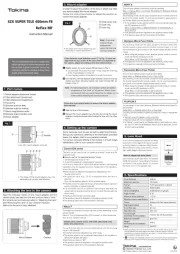
1 April 2025

1 April 2025

1 April 2025

1 April 2025

1 April 2025

25 Januari 2024

24 Januari 2024

24 Januari 2024

24 Januari 2024
Handleiding Lens
- Metabones
- Tamron
- MOFAGE
- Zeiss
- Samyang
- Accsoon
- Olympus
- Teradek
- Voigtlaender
- Pentax
- Pelco
- ARRI
- Voigtlander
- Lensbaby
- Axis
Nieuwste handleidingen voor Lens
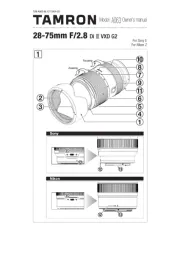
5 Augustus 2025
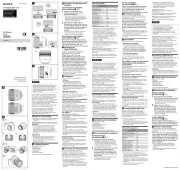
4 Augustus 2025
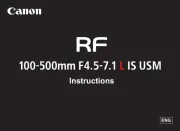
4 Augustus 2025
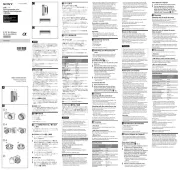
29 Juli 2025
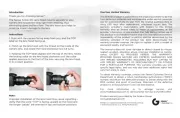
29 Juli 2025
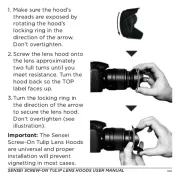
29 Juli 2025
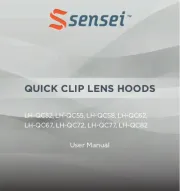
29 Juli 2025
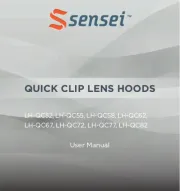
29 Juli 2025
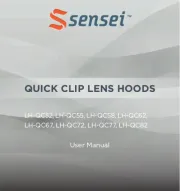
29 Juli 2025
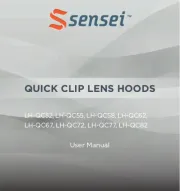
29 Juli 2025